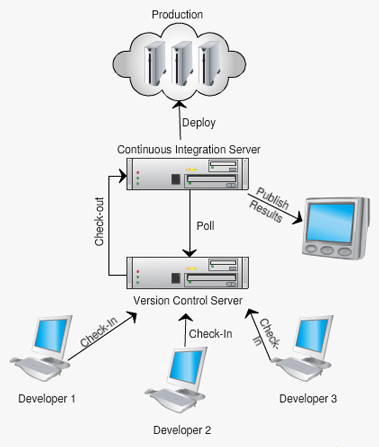Better productivity and collaboration via improved feedback and high-quality information.

Impact of Continuous Integration on Team Culture:
- Encourages an Evolutionary Design and Continuous Improvement culture
- Team takes shared ownership of their development and build process
-
The source control trunk is in an always-working-state (avoid multiple branch issues)
- No developer is blocked because they can’t get stable code
-
Developers break down work into small end-to-end, testable slices and check-in multiple times a day
-
Developers are up-to date with other developer changes
-
Team catches issues at the source and avoids last-minute integration nightmares
-
Developers get rapid feedback once they check-in their code
-
Builds are optimized and parallelized for speed
-
Builds are incremental in nature (not big bang over-night builds)
-
Builds run all the automated tests (may be staged) to give realistic feedback
-
Build results and logs are captured and visualized very effectively
-
Various source code quality metrics trends are displayed, such as code coverage, cyclomatic complexity, coding convention violations, version control activity, bug counts, etc.
-
-
-
Influence the right behavior in the team by acting as Information Radiator in the team area
- Provide clear visual feedback about the build status
- Developers ask for an easy way to run and debug builds locally (or remotely)
-
Broken builds are rare. However broken builds are rapidly fixed by developers
-
Build results are intelligently archived
-
Easy navigation between various build versions
-
Easy visualization and comparison of the change sets
-
- Large monolithic builds are broken into smaller, self contained builds with a clear build promotion process
- Complete traceability exists: Version Control, Project & Requirements Managements tool, Bug Tracking and Build system are completely integrated
- CI page becomes the project dashboard for everyone (devs, testers, managers, etc.)
Any other impact you think is worth highlighting?




